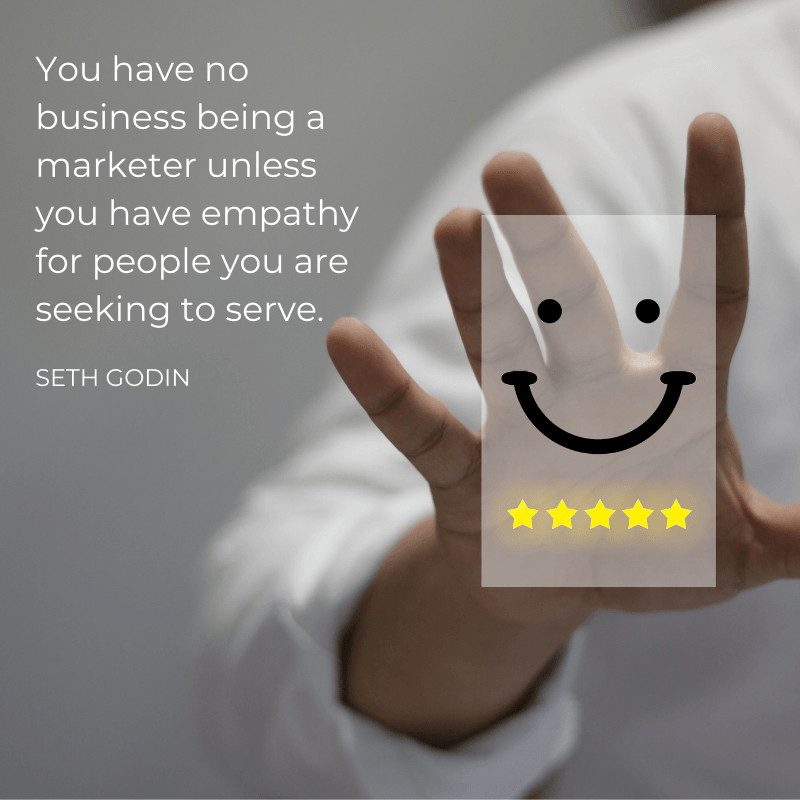How do you feel about empathy?
It’s a clever headline, but from a business standpoint, how often do you find yourself wishing we had more of it?
Empathy is a deeper level of understanding required for relationships and design. ‘Required’ may sound extreme, because for many of us, understanding how empathy flows inside business environments is new terrain.
In his book, 'Empathy', Roman Krznaric gives a refreshingly straight-forward definition:
"Empathy is the art of stepping imaginatively into the shoes of another person, understanding their feelings and perspectives, and using that understanding to guide your actions."
It’s much different than sympathy, and it’s not the same as the golden rule, “do unto others as you would have them do unto you.” Because, as George Bernard Shaw points out, people have different preferences. And empathy includes discovering what their preferences are.

Could a greater miracle take place than for us to look through each other’s eyes for an instant?
-HENRY DAVID THOREAU
Businesses who design with empathy improve experience.
When practicing empathy, awareness is an inherent part of the process. Understanding of others and self naturally increases. Companies who know their strengths, weaknesses, and what’s important to stakeholders have clear awareness of who they are today. If you know who you are, and you design end-to-end experiences for stakeholders who you know, satisfaction increases. Employee satisfaction, customer satisfaction, and the board of directors, too.
The Operational Side of Empathy
What does empathy look like in action? Here’s a business breakdown in three stages:
1 - Ask & Listen
Empathy starts with knowing, it’s cognitive. It’s a continuous stage in any relationship where you’re asking for and gathering information, preferences, and feedback. Creating a culture of empathy begins with awareness. You might survey customers, employees, and vendors; have a roundtable with your team, or a one-on-one with your boss. You consider all perspectives and feedback, good and bad, strengths and weaknesses. Awareness increases as you discover stakeholder needs, and whether you’re meeting them.
During this stage, to increase self-awareness and improve the quality of communication, companies may administer personality diagnostics so teams can discover more about their own work style, traits, and tendencies. And strategically, they may hire emotionally intelligent leaders who have exceptional communication skills to increase the depth and effectiveness of communication inside their organization.
2 - Understand, Relate, Feel
The second part of empathy is emotional. During stage 1, if we learned someone is experiencing pain, this is the stage where we gather more information to understand their pain points more fully - the how and why - and the impact. Pulse surveys, focus groups, case studies, analytics, and appointing brand ambassadors are all part of this stage, where Companies attempt to learn about their target audience, emotionally relate to them, and discover how they can best serve them.
3 - Take Guided, Intentional Action
The third stage of empathy involves action. It’s the stage where a full range of more informed decisions can be made - ranging from how you act, what messages you convey, what strategies you choose, and what services you offer. Is it possible to make decisions and take action without awareness or empathy? Can a company implement new systems and policies without knowledge of the people who may be impacted? Sure. But messages will be less sensitive and less personal, and your actions may not have the desired outcome or achieve the business results you’re after. Empathy empowers companies and leaders to proactively consider how their approach and delivery will be interpreted and perceived by employees and target customers.
During this stage, teams combine data with imaginative, creative techniques to design end-to-end experiences. Lifecycle design (onboarding through termination,) persona development, and storyboarding are utilized to imagine how employees and customers will respond in a variety of scenarios.
Apply Everywhere
Thought leader Seth Godin says, “you have no business being a marketer unless you have empathy for people you are seeking to serve.”
It’s hard to argue with anything from Mr. Godin, but in his observation, he’s missing leaders. Maybe someone can ask him to change the wording.













